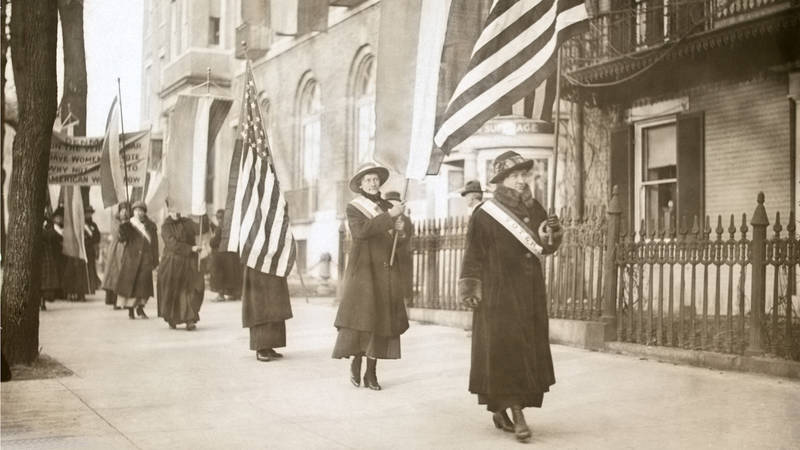Summer 2016
Claiming the Rock
The 19-month occupation of Alcatraz Island, from 1969 to 1971, marked a turning point in American Indian activism.
They embarked on a three-masted boat, intent on claiming what they saw as rightfully theirs. The problem was that the owner of the Monte Cristo had agreed only to take them on a tour around Alcatraz Island — he didn’t plan to dock. So as the ship drew near, Richard Oakes, a Mohawk, decided to dive into the waters of San Francisco Bay. Four others would soon follow, and as the swimmers reached the island, the passengers cheered.
After centuries of violence, disease, land grabs, brutal assimilation policies and humiliation, this felt like a victory for the small group of American Indians. The U.S. Coast Guard rounded up the swimmers and brought them back to the mainland, but 11 days later, on Nov. 20, 1969, another boat sailed to Alcatraz and 79 people jump-started an occupation that would last 19 months.
The notorious prison had closed in 1963. A handful of Sioux occupied the island for a few hours in 1964, claiming the land under the provisions of the 1868 Treaty of Fort Laramie, which authorized Indians to settle land unused by the government. Their assertion was ignored, and the city of San Francisco endorsed a wealthy developer’s bid to turn the island into a theme park and shopping center. Many locals protested the move. Indians in the Bay Area viewed it as an affront.
“It was like another broken treaty, smack in our face,” said LaNada War Jack, who mobilized university students to join the occupation. “So we said, ‘We’re going to have to take it back.’”
The United States’ efforts to assimilate American Indians had accelerated in the previous decades. Starting in the 1940s, the government adopted a series of laws and policies that aimed to end tribes’ special status, subjecting American Indians to state and federal laws and withdrawing aid and services to people living on reservations. Then in the mid-1950s, the government began to encourage them to leave their reservations, acquire professional skills and relocate to the country’s urban centers. There, few were able to find decent-paying jobs, and poverty, culture shock and racial prejudice were the norm. Many settled in the San Francisco area, which became a hub of Indian activism.
The Alcatraz takeover was heavy on parody. Organizers created a mock “Bureau of Caucasian Affairs” and issued a proclamation offering $24 in “glass beads and red cloth” for the island. The document went on to note the many similarities between Alcatraz and the typical Indian reservation: Both have rocky and nonproductive soil, they wrote, and are “isolated from modern facilities, and without adequate means of transportation.”
ESCAPING ALCATRAZ
“We used satire and humor,” said Adam Fortunate Eagle, one of the early organizers. “We were warriors without weapons.”
The occupiers included students and families with children; many did not expect to stay long. “We didn’t bring a whole lot except ourselves and sleeping bags,” said Edward Castillo, then a young instructor at the University of California, Los Angeles. The following days were difficult because a Coast Guard blockade prevented food supplies from reaching the island. But as Thanksgiving approached, the embargo was lifted and supplies started pouring in. The occupation received broad support. John Cantwell, an Alcatraz ranger who was about 10 at the time, remembers his parents donating canned goods. Rock band Creedence Clearwater Revival gave the occupiers money to buy a supply boat.
Federal authorities adopted a benevolent approach. An adviser to President Richard Nixon directed law enforcement to abstain from removing the occupiers forcibly to avoid a public-relations nightmare. But Nixon was also sensitive to the plight of American Indians — Wallace “Chief” Newman, his football coach at Whittier College and a Luiseño Indian, had made a profound impression on the future president.
In July 1970, eight months after the occupation started, Nixon called for a new era of self-determination and asked Congress to pass a bill authorizing the return of sacred land to the Taos Pueblo Indians. That bill was the first of a series that put an effective end to decades of government-sanctioned assimilation.
Fortunate Eagle sees the government’s turnabout as the direct result of the occupation, but others dispute that interpretation. Paul Chaat Smith, a curator at the National Museum of the American Indian and the co-author of a book about Indian activism, said the administration’s Indian policy was already in motion at that time and not triggered by the protest. But Smith credits the occupation with launching a more militant brand of activism and instilling pride in a population that had lost much of it. “These actions really captured the imagination of so many Indian people, and it gave people a lot of hope,” he said.
The occupation’s legacy was muddied by internecine strife, though. Oakes, the first to swim to the island, left Alcatraz after his 13-year-old daughter fell to her death in unclear circumstances. Others departed, disenchanted with the leadership. In June 1971, U.S. marshals and other law enforcement stormed the island and removed the last 15 occupiers, who offered no resistance.

National Parks
You can read this and other stories about history, nature, culture, art, conservation, travel, science and more in National Parks magazine. Your tax-deductible membership donation of $25 or more entitles…
See more ›The protest shaped the lives of the participants in different ways. People on War Jack’s reservation viewed her activist past with suspicion, which she said made it hard for her to secure work. Fortunate Eagle said the federal government impeded his business ventures, and he eventually retired to his wife’s reservation in Nevada. Castillo, on the other hand, said the connections he made on the island opened new doors for his academic career. He also met his future wife there. “I did have a wonderful daughter as a result of this,” he said.
One tangible outcome of the protest was the designation of the island as part of Golden Gate National Recreation Area in 1972, which wouldn’t have happened without the occupation and subsequent derailment of the proposed commercial development. That’s what Eloy Martinez, one of the occupiers, told Cantwell, the park ranger, during a visit to the island almost three decades ago. “I had to remind him that without us, he wouldn’t have a job there,” Martinez said.
The two shook hands then and have worked together ever since to keep the occupation’s story alive.
About the author
-
 Nicolas Brulliard Senior Editor
Nicolas Brulliard Senior EditorNicolas is a journalist and former geologist who joined NPCA in November 2015. He writes and edits online content for NPCA and serves as senior editor of National Parks magazine.


